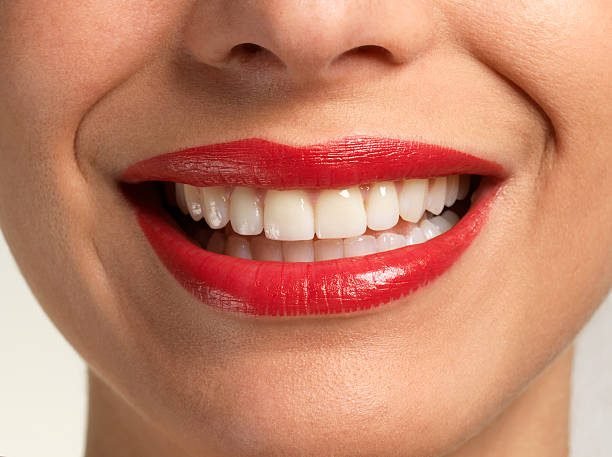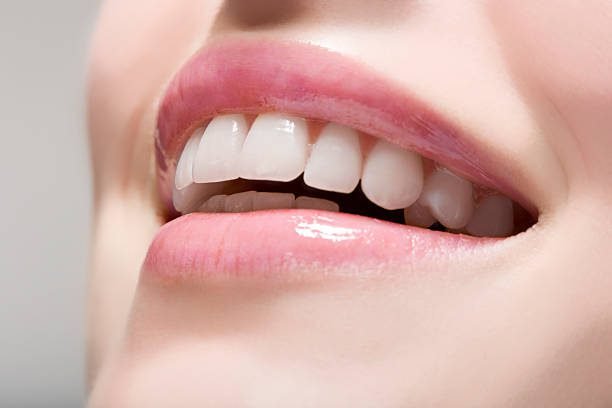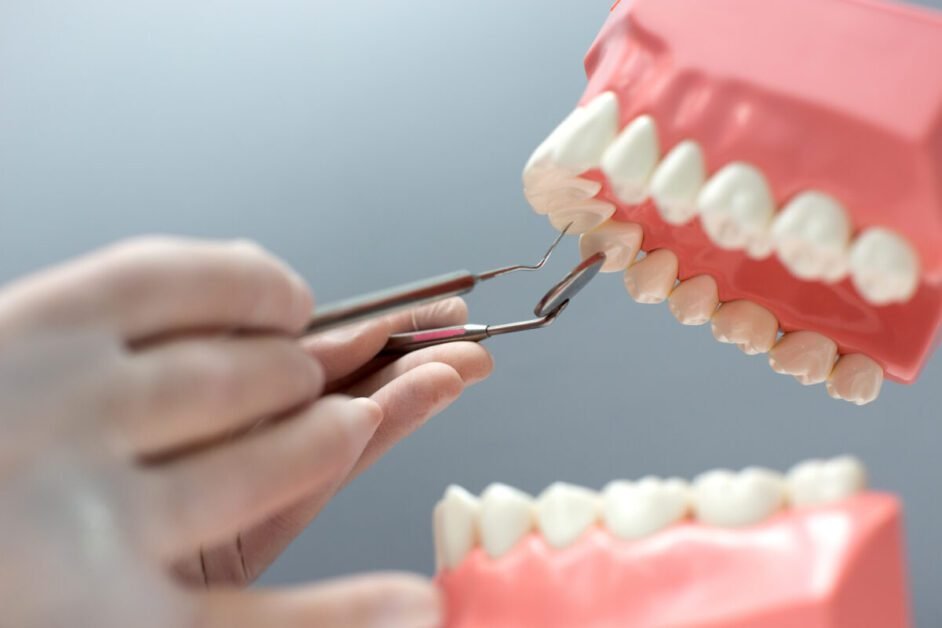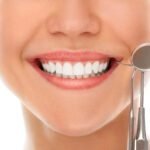Table of Contents
The Composition of Teeth: Understanding the Structure

Teeth are fascinating structures with a complex composition that allows us to bite, chew, and speak. Understanding the structure of teeth is essential for maintaining their health and preventing dental issues.
At a basic level, teeth are composed of four main layers: enamel, dentin, cementum, and the pulp. Enamel, the outermost layer, is the hardest substance in the human body and serves as a protective barrier against bacteria and acid erosion. Beneath the enamel lies dentin, a yellowish layer that provides support to the enamel and contains microscopic tubes that connect to the nerves in the pulp. Cementum, found on the roots of teeth, covers and anchors them to the jawbone. Finally, the pulp, located in the center of the tooth, contains nerves, blood vessels, and connective tissue, playing a crucial role in tooth development and sensitivity.
These layers work together to give teeth their strength and function. Enamel’s hardness protects the inner layers from damage, while dentin provides support and flexibility. The pulp, as the core of the tooth, nourishes and maintains the tooth’s overall health. Each layer has a unique composition, with a combination of mineralized materials like hydroxyapatite crystals, collagen fibers, and various proteins. This intricate composition contributes to the structural integrity and functionality of teeth.
The Role of Minerals in Tooth Structure

The role of minerals in tooth structure is crucial for maintaining the strength and integrity of teeth. Various minerals, such as calcium, phosphorus, and fluoride, play essential roles in the formation and maintenance of tooth structure.
Calcium is one of the main minerals found in teeth, comprising about 99% of the enamel, dentin, and cementum. It is responsible for providing strength and rigidity to the teeth, making them resistant to damage and decay. Phosphorus is another mineral that works in conjunction with calcium to form hydroxyapatite crystals, which are the building blocks of teeth. These crystals contribute to the hardness and durability of tooth structure.
Fluoride is a mineral that helps to prevent tooth decay by strengthening the enamel and making it more resistant to acid attacks from bacteria and plaque. It works by remineralizing areas of the enamel that have been damaged by acid, forming a stronger and more resistant enamel surface. Additionally, fluoride helps to inhibit the growth of harmful bacteria in the mouth, reducing the risk of cavities and promoting overall oral health.
Overall, the presence of minerals in tooth structure is vital for maintaining strong and healthy teeth. Understanding the role of minerals and ensuring a proper intake through a balanced diet and fluoride treatments can help prevent dental issues and ensure the longevity of your smile.
Enamel: The Hard, Protective Layer of Teeth

Enamel is the outermost layer of a tooth and serves as its hard and protective shield. Composed of closely packed mineral crystals, enamel is the hardest substance in the human body. It is primarily made up of hydroxyapatite, a calcium phosphate compound that gives enamel its incredible strength.
The main function of enamel is to safeguard the underlying layers of the tooth from everyday wear and tear. It acts as a barrier, shielding the dentin and dental pulp from temperature changes, acidic foods, and bacteria. Without enamel, our teeth would be vulnerable to decay, sensitivity, and damage. Therefore, it is essential to maintain the health of enamel through regular brushing, flossing, and dental check-ups.
Dentin: The Supportive Layer Beneath Enamel
Dentin, the supportive layer beneath enamel, plays a crucial role in maintaining the overall structure and strength of our teeth. Composed of living cells called odontoblasts, dentin forms the bulk of the tooth structure and surrounds the delicate pulp tissue. With its yellowish hue, dentin is responsible for giving our teeth their natural color.
One of the primary functions of dentin is to support and protect the inner pulp chamber, which contains blood vessels, nerves, and connective tissue. Dentin acts as a shield, safeguarding these sensitive structures from external stimuli and preventing the transmission of harmful bacteria. It provides an additional layer of defense for the pulp, ensuring its vitality and health.
Moreover, dentin is pivotal in preventing tooth fractures and breakage. While enamel forms the outermost protective layer, it is brittle and prone to chipping. Dentin, however, is much stronger and resilient, acting as a shock-absorbing buffer. It is this structural robustness of dentin that enables our teeth to withstand the forces exerted during biting and chewing, allowing us to enjoy a diverse range of foods without damaging our dentition.
In summary, dentin serves as the vital supportive layer beneath the enamel, providing strength, protection, and stability to our teeth. Its unique properties and composition make it an essential component of our dental structure, ensuring the overall functionality and longevity of our smiles.
Here’s a table summarizing the Dentin: The Supportive Layer Beneath Enamel.
| Dentin: The Supportive Layer Beneath Enamel | Description | Credible Source |
|---|---|---|
| Composition and Structure | Dentin is a calcified tissue that forms the bulk of the tooth structure beneath the enamel and cementum. It consists of microscopic tubules, dentinal fluid, and mineralized collagen fibers. Dentin provides support and protects the inner pulp tissue. | National Institute of Dental and Craniofacial Research (NIDCR): Link |
| Functions | Dentin serves as a protective layer for the tooth’s pulp, providing cushioning and insulation against external stimuli. It also contributes to tooth strength and flexibility, allowing for efficient chewing and biting. | American Dental Association (ADA): Link |
| Sensitivity | Dentin sensitivity occurs when dentinal tubules become exposed, allowing stimuli such as temperature changes or acidic foods to reach the nerve endings in the pulp. Proper oral care and desensitizing treatments can help manage dentin hypersensitivity. | Mayo Clinic: Link |
Cementum: The Layer That Anchors Teeth to the Jawbone
Cementum, a hard, mineralized tissue, plays a crucial role in maintaining the stability and integrity of our teeth. It serves as the layer that anchors our teeth firmly to the jawbone. Without this vital structure, our teeth would be prone to loosening and eventually falling out.
Composed of a combination of mineralized tissue and collagen fibers, cementum forms a thin layer that covers the root surface of our teeth. It acts as a protective shield, shielding the underlying dentin and pulp from external forces and potential damage. Cementum also helps to anchor the periodontal ligament fibers, which connect the tooth to the surrounding bone, providing further stability.
In addition to providing anchorage, cementum also plays a crucial role in tooth sensitivity. The cementum contains numerous tiny channels, called dentinal tubules, that connect to the dentin and transmit stimuli from the tooth’s surface to the nerve endings within the pulp. Any damage or erosion to the cementum can result in increased sensitivity, making it essential to protect this layer to maintain optimal oral health.
The Pulp: The Sensitive Core of Teeth
The pulp, known as the sensitive core of teeth, plays a crucial role in both the development and health of our pearly whites. Located in the center of each tooth, the pulp is made up of connective tissue, blood vessels, and nerves. It serves as the lifeline, providing nutrients and oxygen to the tooth while also sensing temperature and other sensory stimuli.
The main function of the pulp is to facilitate tooth development during childhood, when the teeth are still growing and maturing. As we age, however, the role of the pulp shifts more towards maintenance and protection. It forms a multifaceted defense mechanism against external threats such as tooth decay and trauma. It initiates the immune response by triggering the production of dentin, the supportive layer beneath the enamel, to repair any damage caused to the tooth structure. Furthermore, the pulp is responsible for perceiving pain and alerting us to potential dental issues, such as cavities or infections, prompting us to seek timely dental care.
The Anatomy of Tooth Roots
Tooth roots play a crucial role in the overall structure and stability of teeth. Located beneath the gum line, these vital components extend into the jawbone, firmly anchoring the tooth in place. The anatomy of tooth roots consists of several key elements that contribute to their function and durability.
One of the main components of tooth roots is the periodontal ligament. This fibrous tissue connects the tooth root to the surrounding bone and acts as a cushioning pad, protecting the tooth from the forces of chewing and biting. Additionally, the periodontal ligament allows for slight movement of the tooth, which helps dissipate the pressure during chewing and prevents damage to the tooth or surrounding structures. This flexible connection is essential for maintaining the health and stability of the tooth root.
The Importance of Collagen in Tooth Structure
Collagen, a protein found in abundance throughout the body, plays a crucial role in the structure and function of teeth. In fact, it is the most abundant protein in the human body, accounting for about 30% of the total protein content. In tooth structure, collagen provides strength, resilience, and support.
One of the key roles of collagen in teeth is in the formation and maintenance of the dentin, which is the layer beneath the protective enamel. Dentin, comprising the majority of the tooth structure, is responsible for providing support to the enamel and protecting the sensitive pulp beneath. Collagen makes up a significant portion of dentin, giving it the necessary flexibility and strength to withstand the forces of biting and chewing.
Furthermore, collagen also plays a crucial role in the attachment of teeth to the surrounding bone through the periodontal ligament. This ligament acts as a shock absorber, cushioning the forces exerted on the teeth during biting and chewing. Collagen fibers within the ligament help to anchor the teeth securely to the jawbone, ensuring stability and proper function. In addition, collagen helps to maintain the integrity of the gum tissues, aiding in their health and support of the teeth.
Overall, the importance of collagen in tooth structure cannot be overstated. Its presence and function contribute not only to the strength and resilience of teeth but also to their overall health and stability. Understanding the role of collagen in tooth structure allows dental professionals to better diagnose and treat dental issues, while also highlighting the significance of maintaining collagen levels for optimal oral health.
The Differences Between Teeth and Bones
Teeth and bones are both part of the skeletal system, but they have several key differences in terms of structure and function. One major distinction is the fact that teeth are much harder than bones. This is due to the fact that teeth are composed primarily of a substance called enamel, which is the hardest tissue in the human body. In contrast, bones are made up of a combination of collagen, a fibrous protein, and minerals such as calcium and phosphorus.
Another difference between teeth and bones is their composition. While both contain minerals, teeth have a higher mineral content compared to bones. This is why teeth are able to withstand the forces of chewing and grinding without breaking or fracturing. Additionally, the mineral composition of teeth makes them resistant to decay, which is a common dental issue.
Moreover, teeth and bones have different functions within the body. Bones provide structural support and protection to vital organs, as well as facilitate movement and store minerals. On the other hand, teeth play a crucial role in the process of digestion by breaking down food into smaller, more manageable pieces. They also contribute to speech and provide aesthetic appeal to the face.
In summary, teeth and bones have distinct differences in terms of their hardness, composition, and function. Understanding these dissimilarities is essential for maintaining good oral health and overall well-being.
The Function of Teeth in the Mouth
Teeth play an essential role in the mouth, serving several functions that contribute to overall oral health and well-being. One of the primary functions of teeth is the process of mastication, or chewing. This important function allows for the breakdown of food into smaller, more manageable pieces, facilitating the digestion process.
In addition to aiding in the digestion of food, teeth also contribute to proper speech production. The movements and positions of the tongue, lips, and teeth work together to produce a wide range of sounds and articulations. Without the presence and proper alignment of teeth, some sounds may become difficult to articulate correctly, leading to speech impairments.
Moreover, teeth have a significant impact on self-confidence and aesthetics. A healthy and attractive smile can positively influence a person’s self-esteem and overall social interactions. Conversely, dental problems such as missing or discolored teeth can lead to self-consciousness and hinder one’s ability to express themselves confidently.
Considering these crucial functions, maintaining optimal oral health and seeking appropriate dental care becomes paramount. Regular dental check-ups, diligent oral hygiene practices, and a well-balanced diet are key factors in ensuring the proper function and longevity of teeth in the mouth.
The Process of Tooth Development
Tooth development is a complex and fascinating process that begins long before a child is even born. It is a carefully orchestrated series of events that involves the interaction of various cells, tissues, and signaling molecules. The formation of teeth, or odontogenesis, begins around the sixth week of fetal development and continues well into childhood.
At the heart of tooth development is the dental lamina, a band of epithelial cells that forms along the gum line. This structure gives rise to the tooth buds, which will eventually develop into the different types of teeth – incisors, canines, premolars, and molars. As the tooth buds mature, they undergo a process called morphogenesis, where they acquire their distinct shape and attributes.
Meanwhile, beneath the dental lamina, a specialized group of cells known as the dental papilla begins to differentiate. The dental papilla is responsible for producing the dentin, a hard, mineralized tissue that forms the bulk of the tooth. It also contains the dental pulp, a vital component that houses blood vessels, nerves, and connective tissues. The dental papilla and the surrounding inner enamel epithelium work in harmony to establish the intricate structure of the tooth, with each layer forming at the appropriate time and location.
Understanding the process of tooth development is essential for dental professionals, as it provides valuable insights into the underlying biology and pathology of teeth. By comprehending the intricate steps involved in the formation of teeth, dentists can better diagnose and treat various dental conditions, address developmental abnormalities, and guide the optimal growth and development of their patients’ smiles.
The Impact of Aging on Tooth Structure
As we age, our tooth structure undergoes changes that can affect overall oral health. One of the primary impacts of aging on tooth structure is the gradual loss of enamel, the hard, protective layer that covers the outer surface of our teeth. Over time, the enamel can become thinner and more susceptible to wear and tear, making the teeth more vulnerable to cavities and tooth decay.
Additionally, as we age, the dentin, which is the supportive layer beneath the enamel, begins to shrink. This can lead to the formation of small cracks and gaps in the teeth, which can provide entry points for bacteria and lead to tooth sensitivity. Furthermore, the pulp, the sensitive core of the teeth that contains nerves and blood vessels, can also deteriorate with age, potentially leading to increased tooth sensitivity and a higher risk of developing infections.
It is important to note that while aging can impact tooth structure, proper oral hygiene and regular dental care can help mitigate these effects. Maintaining a consistent routine of brushing and flossing, as well as visiting the dentist for regular check-ups and cleanings, can contribute to preserving good dental health as we age. Furthermore, adopting a healthy lifestyle, including a balanced diet and avoiding harmful habits such as smoking and excessive alcohol consumption, can also contribute to the overall health of our teeth and gums.
Common Dental Issues Related to Tooth Structure
One of the most common dental issues related to tooth structure is tooth decay. Tooth decay occurs when the enamel, the hard, protective outer layer of the tooth, is eroded by acid-producing bacteria in the mouth. This can lead to cavities, which are small holes in the teeth. If left untreated, tooth decay can progress further into the tooth, affecting the dentin and the pulp, and eventually leading to tooth loss. Tooth decay can be prevented by practicing good oral hygiene, such as brushing and flossing regularly, and by avoiding foods and beverages high in sugar.
Another common dental issue related to tooth structure is tooth sensitivity. Tooth sensitivity occurs when the dentin, the supportive layer beneath the enamel, becomes exposed. This can happen due to enamel erosion, gum recession, or tooth wear. When the dentin is exposed, it can cause discomfort or pain when the tooth is exposed to hot, cold, or acidic foods and drinks, as well as to touch or pressure. Tooth sensitivity can be managed by using desensitizing toothpaste, avoiding triggers, and seeking dental treatment, such as the application of dental sealants or fluoride treatments.
The Role of Genetics in Tooth Structure
The role of genetics in tooth structure is a fascinating area of study that has uncovered valuable insights into the development and composition of our teeth. Scientists have long recognized the hereditary nature of certain dental traits, such as tooth shape, size, and even susceptibility to certain oral diseases.
Research has shown that genetic factors can influence various aspects of tooth structure, including the formation of enamel, dentin, and the supporting tissues of the teeth. For example, genes have been identified that control the production of specific proteins necessary for enamel development, such as amelogenin and enamel matrix proteins. Variations in these genes can affect the quality and strength of the enamel, making individuals more or less prone to dental caries and enamel erosion.
Additionally, genetic mutations or abnormalities can lead to conditions such as amelogenesis imperfecta and dentinogenesis imperfecta, which result in abnormal tooth enamel and dentin formation, respectively. These conditions can cause a range of symptoms, from discolored and weak teeth to increased susceptibility to dental infections.
Understanding the role of genetics in tooth structure not only provides valuable insights into the underlying mechanisms of tooth development but also holds promise for personalized dental care in the future. By identifying specific genetic markers associated with tooth structure and oral health, dentists may be able to tailor preventive and treatment strategies based on an individual’s genetic makeup. This exciting field of research offers new possibilities for improving dental health and ensuring long-lasting, strong teeth for future generations.
Maintaining Healthy Tooth Structure: Tips and Advice
Proper dental hygiene is essential for maintaining healthy tooth structure and preventing a host of oral health issues. Here are some tips and advice to help you keep your teeth in optimal condition:
1. Brush and floss regularly: Brush your teeth at least twice a day for two minutes each time, using a soft-bristled toothbrush and fluoride toothpaste. Floss daily to remove plaque and food particles from between your teeth and along the gumline.
2. Maintain a balanced diet: A nutritious diet plays a vital role in maintaining healthy teeth. Limit your intake of sugary and acidic foods and beverages, as they can contribute to tooth decay. Instead, opt for a diet rich in calcium, phosphorus, and vitamin D, which are essential for strong teeth.
3. Seek regular dental check-ups: It is crucial to visit your dentist for regular check-ups and professional cleanings. Your dentist will be able to identify any early signs of dental problems and recommend appropriate treatment to prevent further deterioration.
4. Avoid smoking and excessive alcohol consumption: Smoking and excessive alcohol consumption not only harm your overall health but also contribute to gum disease and tooth loss. Quit smoking and limit your alcohol intake to maintain a healthy smile.
These tips, along with diligent oral hygiene practices, can go a long way in maintaining healthy tooth structure and ensuring a lifetime of good oral health. Consult with your dentist for personalized advice and recommendations based on your specific oral health needs.
The Future of Dental Research on Tooth Structure
Recent advances in dental research have paved the way for exciting developments in the understanding of tooth structure. As scientists delve deeper into this complex subject, they are uncovering new insights that could have a profound impact on dental care in the future.
One area of focus in dental research is the exploration of biomaterials that mimic the natural composition of teeth. By studying the structure and properties of enamel, dentin, and cementum, researchers aim to create synthetic materials that can effectively restore and replace damaged or missing tooth structure. This could revolutionize dental treatments, offering patients more durable and aesthetically pleasing solutions.
Additionally, researchers are exploring innovative techniques to enhance the regenerative capacity of dental tissues. By understanding the cellular mechanisms involved in tooth development and repair, scientists hope to develop regenerative therapies that can promote the natural regeneration of tooth structure. Such advancements could potentially eliminate the need for traditional dental restorations, providing a more biologically driven approach to maintaining and restoring oral health.
As dental research continues to advance, it holds the promise of transforming the field of dentistry and improving oral health outcomes for patients. With ongoing studies focused on biomaterials and regenerative therapies, the future of dental research on tooth structure looks bright.
What is the current state of dental research on tooth structure?
Dental research on tooth structure is constantly evolving and advancing. Scientists are continually studying and exploring the composition, function, and development of teeth to gain a deeper understanding of their structure.
How does the composition of teeth contribute to their structure?
The composition of teeth, which mainly consists of minerals such as hydroxyapatite, plays a crucial role in their structure. These minerals provide strength and hardness to teeth, making them capable of withstanding the forces exerted during chewing and biting.
What is the role of enamel in tooth structure?
Enamel is the hard, protective outer layer of teeth. It helps to prevent tooth decay and protects the underlying dentin and pulp from external factors such as bacteria and temperature changes.
What is dentin and its significance in tooth structure?
Dentin is the supportive layer beneath enamel. It forms the majority of the tooth structure and provides additional strength and support to the enamel. Dentin contains microscopic tubules that connect to the pulp, allowing for the transmission of sensory information.
What is the function of cementum in tooth structure?
Cementum is the layer that anchors teeth to the jawbone through a connective tissue called the periodontal ligament. It helps to stabilize teeth and maintain their position in the mouth.
What is the pulp and its role in tooth structure?
The pulp is the sensitive core of teeth, consisting of nerves, blood vessels, and connective tissues. It plays a vital role in tooth vitality and sensory perception, as it provides nourishment and sensory innervation to the tooth.
How do teeth differ from bones in terms of structure?
While both teeth and bones contain minerals and proteins such as collagen, their structures differ significantly. Teeth are harder and denser than bones, have different cellular components, and have specialized functions tailored for biting and chewing.
What is the process of tooth development?
Tooth development, also known as odontogenesis, begins during fetal development and continues into early childhood. It involves the formation and growth of the various tooth tissues, including enamel, dentin, and cementum, within the jawbone.
How does aging impact tooth structure?
As individuals age, natural wear and tear, along with factors such as tooth decay and gum disease, can affect tooth structure. Teeth may become more susceptible to damage, tooth loss, and other dental issues.
Can genetics influence tooth structure?
Yes, genetics can play a role in tooth structure. Certain genetic factors can affect the development and arrangement of teeth, including their size, shape, and alignment. Genetic conditions may also impact the integrity of tooth structure.
What are some common dental issues related to tooth structure?
Dental issues related to tooth structure include tooth decay, tooth sensitivity, enamel erosion, cracked or fractured teeth, tooth loss, and abnormalities in tooth development.
How can one maintain healthy tooth structure?
Maintaining healthy tooth structure involves practicing good oral hygiene habits, such as regular brushing, flossing, and dental check-ups. Additionally, avoiding excessive consumption of sugary and acidic foods, as well as practicing proper tooth protection during activities like sports, can help preserve tooth structure.
What is the future of dental research on tooth structure?
The future of dental research on tooth structure holds great potential for advancements in understanding, prevention, and treatment of dental issues. Researchers aim to develop innovative techniques, materials, and therapies to enhance tooth structure preservation, regeneration, and repair.




